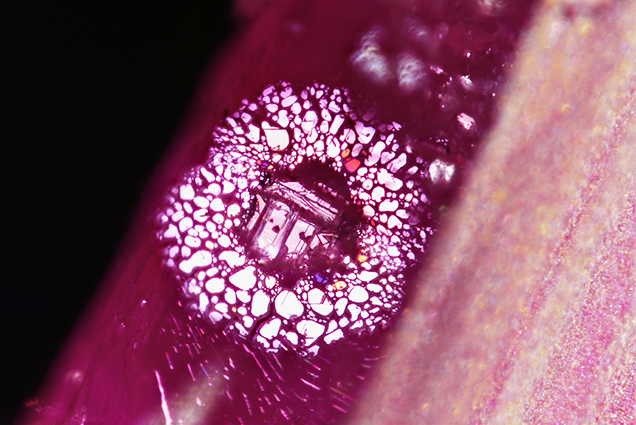Inclusions in Kenyan Rubies from the John Saul Mine

Rubies from the John Saul mine have been available in the market since the 1970s. The gems are found in a pegmatite-like vein that intrudes an ultrabasic body within the country rock (Winter 1999 Gem News, pp. 213–215). While the mine has produced a large quantity of ruby with fine color, only a small part of the production is fine quality and suitable for faceting, with most of the samples being cut into cabochons. Production has declined, and the material is seen less nowadays.

The rubies have an inclusion scene that typically includes short, iridescent needles associated with dense clouds of particles, often in bands (figure 1). Negative crystals surrounded by a plane of thin films are also typical (figure 2). These are very similar to the inclusion scenes in rubies from Mogok (Myanmar) and other marble-hosted deposits. The fact that the color and fluorescence, which is dictated by the trace element chemistry, are also similar to marble-related deposits makes separating them from Kenyan rubies even more challenging. This shows that similar inclusion scenes can form in very different geological environments and that the internal world of gemstones is not always a conclusive indicator of geographic origin.
.jpg)


